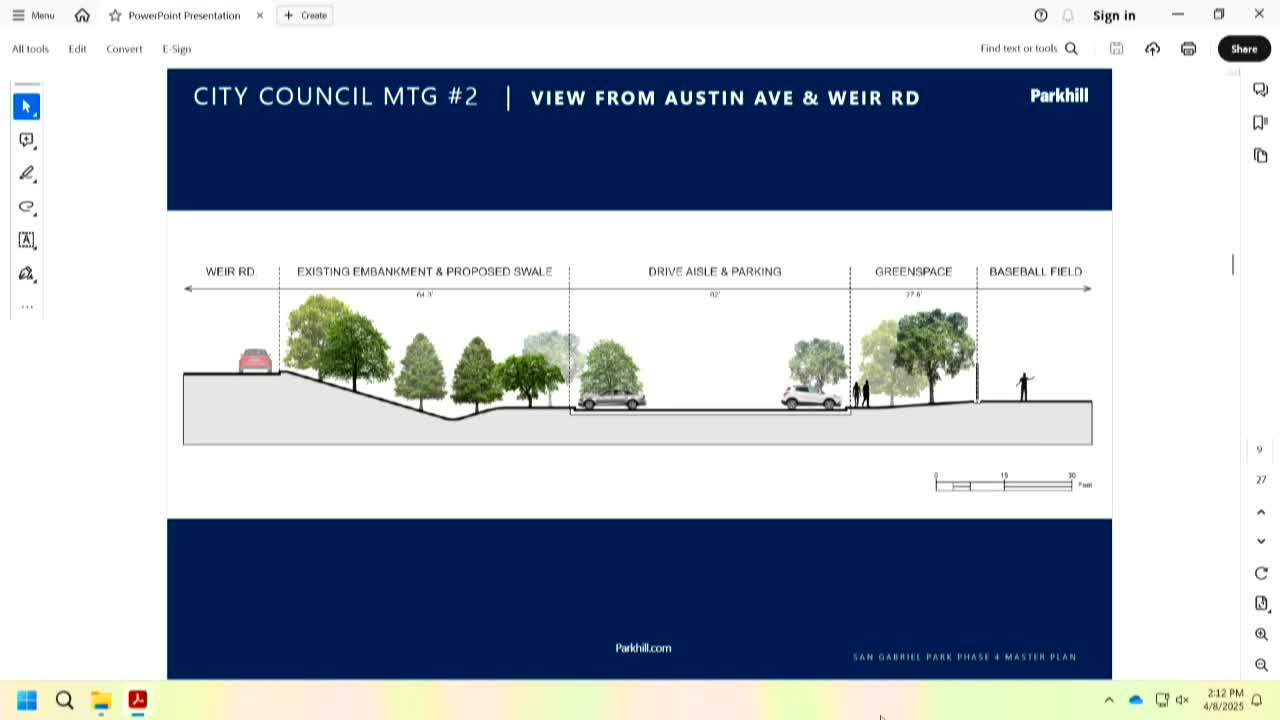Georgetown evaluates synthetic turf for parks amid growth and water conservation needs
April 08, 2025 | Georgetown, Williamson County, Texas
This article was created by AI summarizing key points discussed. AI makes mistakes, so for full details and context, please refer to the video of the full meeting. Please report any errors so we can fix them. Report an error »

Emergency access and field usage dominated discussions at the Georgetown workshop on April 8, 2025, as city officials explored plans for enhancing local sports facilities. A key focus was the proposed loop road, designed to improve emergency personnel access to sports fields and parks, addressing safety concerns for athletes and visitors alike.
The meeting also highlighted a detailed comparison between synthetic turf and natural grass fields. Officials noted that synthetic turf could significantly increase playtime, allowing for nearly three times the hours of use compared to natural grass, which is limited to about 24 hours per week. This is particularly crucial for Georgetown, a rapidly growing community facing increasing demand for recreational spaces.
Maintenance costs were another critical point of discussion. Over a ten-year period, maintaining natural grass fields could cost approximately $2.7 million, while synthetic turf would require about $1.1 million. The stark difference in maintenance needs—natural grass requires extensive upkeep, including irrigation and fertilization—underscored the potential long-term savings of synthetic options.
Water conservation emerged as a significant benefit of synthetic turf, with estimates suggesting that transitioning to synthetic fields could save around 8.7 million gallons of water annually—enough to supply over 200 households. This aspect aligns with the city's commitment to sustainable practices amid growing water scarcity concerns in Central Texas.
As the workshop concluded, officials acknowledged the community's increasing interest in sports programs, with participation rates growing by 10-15% annually. This trend suggests a pressing need for expanded facilities, making the decision between synthetic and natural grass fields even more critical for accommodating future demand. The city is poised to make informed decisions that balance cost, usage, and sustainability as it moves forward with its parks and recreation plans.
The meeting also highlighted a detailed comparison between synthetic turf and natural grass fields. Officials noted that synthetic turf could significantly increase playtime, allowing for nearly three times the hours of use compared to natural grass, which is limited to about 24 hours per week. This is particularly crucial for Georgetown, a rapidly growing community facing increasing demand for recreational spaces.
Maintenance costs were another critical point of discussion. Over a ten-year period, maintaining natural grass fields could cost approximately $2.7 million, while synthetic turf would require about $1.1 million. The stark difference in maintenance needs—natural grass requires extensive upkeep, including irrigation and fertilization—underscored the potential long-term savings of synthetic options.
Water conservation emerged as a significant benefit of synthetic turf, with estimates suggesting that transitioning to synthetic fields could save around 8.7 million gallons of water annually—enough to supply over 200 households. This aspect aligns with the city's commitment to sustainable practices amid growing water scarcity concerns in Central Texas.
As the workshop concluded, officials acknowledged the community's increasing interest in sports programs, with participation rates growing by 10-15% annually. This trend suggests a pressing need for expanded facilities, making the decision between synthetic and natural grass fields even more critical for accommodating future demand. The city is poised to make informed decisions that balance cost, usage, and sustainability as it moves forward with its parks and recreation plans.
View full meeting
This article is based on a recent meeting—watch the full video and explore the complete transcript for deeper insights into the discussion.
View full meeting
